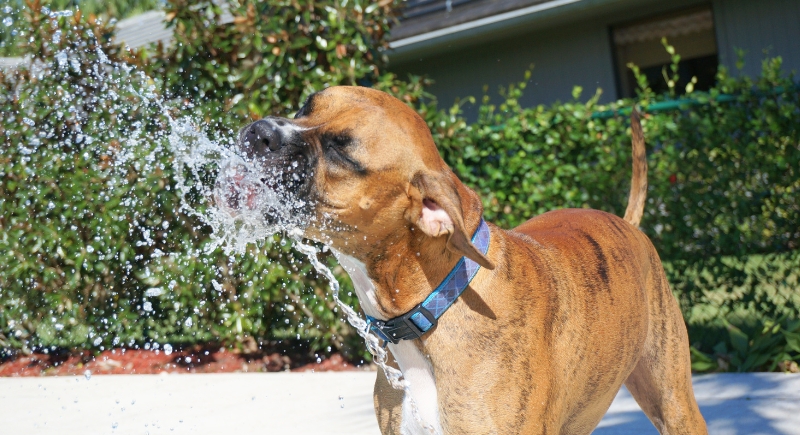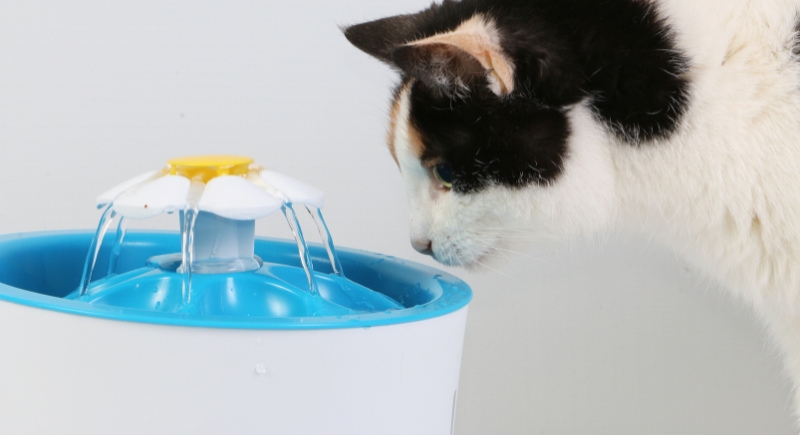That ‘Silly’ Pet Luxury You’re Skipping Could Actually Be Harming Your Animal
The pet industry has no shortage of gadgets, but one item often dismissed as unnecessary might be the most important: the water fountain. To many, it may look like an indulgence for over-the-top pet parents, but it can play a real role in keeping pets properly hydrated and lowering their risk of related health issues.
Hydration is not just limited to quenching thirst. Water helps move nutrients through the body, supports digestion, cushions the brain and spinal cord, and even keeps joints moving comfortably. The problem is that a regular bowl doesn’t always cut it. Stale water can collect fur, dust, and bacteria, and it warms up over time. That mix doesn’t exactly scream “drink me.”
Why Pets Prefer Moving Water

Image via Getty Images/nolamissesyou
Cats, in particular, are notorious for being picky about their water source. Their wild ancestors learned to avoid stagnant puddles because still water often meant danger. Running water signaled freshness. That instinct hasn’t disappeared, which is why many cats are far more likely to drink from a faucet than from their bowl. Dogs also tend to prefer cooler, flowing water, which feels fresher and more appealing.
Pet fountains mimic that natural preference. A pump that keeps water circulating prevents the buildup of impurities. Maintaining a cooler temperature is also easier, so hydration becomes more interesting to pets. The sound and sight of trickling water can be enough to encourage them to drink more often, which helps protect against kidney disease, urinary problems, and dehydration-related conditions.
The Real Perks for Pet Owners
There’s also a very human benefit to upgrading. Anyone with multiple pets knows the annoyance of refilling bowls several times a day. A fountain, especially one with a large reservoir, means fewer trips to the sink and less worry that your pets will run out of water while you’re at work. Some models even connect directly to a water line, eliminating refills altogether.
Fountains are sturdier than bowls, too. They’re less likely to be tipped over, which means fewer puddles on your floor. Plus, they can help cut down on that one annoying chore no one likes: scrubbing bowls that get slimy by the end of the day. The built-in filters keep water cleaner for longer, though you do need to replace them on schedule.
Things to Think About Before Buying

Image via Getty Images/BiancaGrueneberg
Of course, fountains aren’t perfect. They do cost more than a standard dish, with prices starting around $20 and going up to $100 or more for premium options. Filters add an ongoing expense as well.
Some can be a little noisy, producing a hum that might bother light sleepers or anyone who hates background sounds. Cleaning is also a bit more involved. Unlike a simple bowl you can toss in the dishwasher, fountains need to be taken apart and washed by hand, especially the pump.
The good news is that there are plenty of choices out there. Plastic fountains are lightweight and affordable. Ceramic options look stylish but require more careful handling. Stainless steel models are durable and easy to clean. They’re even great for pets with allergies to plastic. With so many designs and capacities, there’s likely one that fits your home and your pet’s personality.
Why Skipping It Could Be a Mistake
At the end of the day, what matters is that your pets drink more water. Drinking enough keeps them healthy, and a fountain makes the process more appealing. Many pets don’t naturally drink as much as they should, but the movement and freshness of a fountain draw them in—helping prevent the serious problems that come with dehydration.